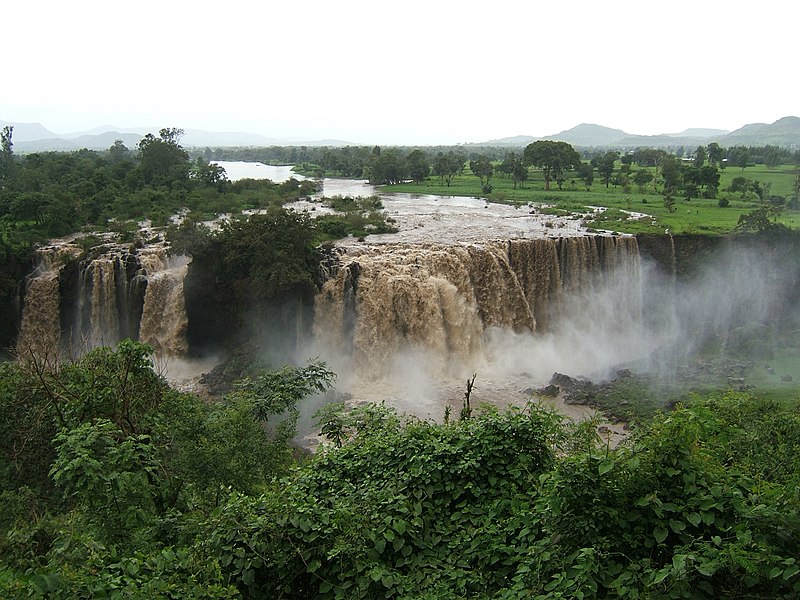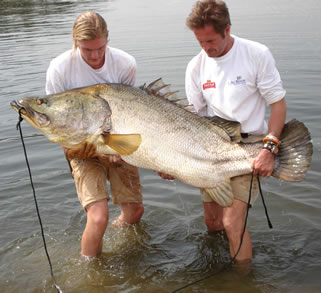
Friday, October 1, 2010
The Aswan Dam
The Aswan Dam crosses the Nile River in Aswan, Egypt. The Dam was first completed in 1902, it was raised twice. The Dam was constructed for three reasons, those reasons are: to control the annual flooding of the Nile, to have a place to store water, and to generate hydroelectricity. Before the dam was built the Nile would flood each summer, these floods would bring natural nutrients and minerals to the Nile Valley, but since the floods were uncontrollable, the flood could have knocked out all of the crops.


Wednesday, September 29, 2010
The White Nile
This is the other river the Nile splits off into, the White Nile. The White Nile is 2,300 miles long. It starts at Lake No and drains into Lake Victoria. The White Nile also refers to the headwaters of Lake Victoria. In the 19th century, Europeans looked for the source of the Nile, this search was mainly based off of the White Nile.


The Bule Nile
The Nile River splits off into two other rivers, the White Nile and the Bule Nile. Here are some facts about the Bule Nile. The Bule Nile originates at Lake Tana in Ethiopia. It is 1,450 miles long. It flows south from Lake Tana then goes west into Sudan. Not to far from Lake Tana, the Bule Nile enters a canyon. This canyon is a huge obstacle from travel and communnication from Northern Ethiopia to Southern Ethiopia.


Tuesday, September 28, 2010
Fish in the Nile
There are many types of fish living in the Nile, including the Nile Perch. But there are also other types of fish living there. There are three main habitats available for fish in the Nile including benthopelagic, pelagic, and demersal. There are also many fish such as Alosa Fallax, Brycinus Nurse, Anquilla Anquilla, Alestes and Dentex. There are many other types of fish, but they are too hard to name.


Monday, September 27, 2010
The Nile Perch
 The Nile Perch is a fresh water fish living in the Nile River. The Nile Perch can grow to be over 195cm long and weigh over 200 kg. When a female lays eggs, she will lay about 16 million eggs at a time. The Nile Perch is a valuable fish, the fillets from this fish are sent to other parts of Africa. In some parts of the world it is now illegal to possess, raise, sell, or buy a live Nile Perch. This is all because the Nile Perch is a large Fish. Many fishermen only dream of catching this fish, others actually catch this fish.
The Nile Perch is a fresh water fish living in the Nile River. The Nile Perch can grow to be over 195cm long and weigh over 200 kg. When a female lays eggs, she will lay about 16 million eggs at a time. The Nile Perch is a valuable fish, the fillets from this fish are sent to other parts of Africa. In some parts of the world it is now illegal to possess, raise, sell, or buy a live Nile Perch. This is all because the Nile Perch is a large Fish. Many fishermen only dream of catching this fish, others actually catch this fish.
The Nile's Role in Egypt
Herodotus, a Greek god, said Egypt was the gift of the Nile. The Nile has been very important in the civilization of Egypt. Each year after the Nile floods, it leaves behind a layer of fertile silt. This makes the land area ideal for farming and growing crops for food. At least 95% of Egypt's population lives along the Nile or within 12 miles of the river. As you can see the Nile River has been a crucial tool for the growing and developing of Egypt.
Wednesday, September 22, 2010
Snakes in the Nile
There are many snakes living in and around the Nile. There are poisonous snakes and water snakes. Some posionous snakes are the Black Mamba, The Puff Adder, The Boomsang, The Gaboon Viper, The Egyptian Cobra, The Carpet Viper, The Cape Cobra, and the Eastern Green Mamba. Here are some water snakes the Cottonmouth Water Moccosin, The Brown Water Snake, and copper heads. Of course the snakes that you might live around depends on where you actually do live.
What Lives in the Nile
 I'm walking along the Nile River and I see lots of reptiles. Mainly reptiles live in and around the Nile River. The most common animal that lives in the Nile is the Nile Crocodile. Sometime there are hippopotamus' living along the Nile. There is also soft shell turtles, lizards, and 15 kinds of poisonous snakes. There are also many fresh water fish living in the Nile such as the Nile Perch, the tiger fish, lungfish, catfish, mud fish, and eel
I'm walking along the Nile River and I see lots of reptiles. Mainly reptiles live in and around the Nile River. The most common animal that lives in the Nile is the Nile Crocodile. Sometime there are hippopotamus' living along the Nile. There is also soft shell turtles, lizards, and 15 kinds of poisonous snakes. There are also many fresh water fish living in the Nile such as the Nile Perch, the tiger fish, lungfish, catfish, mud fish, and eel

Sunday, September 19, 2010
The Nile Crocodile
The Nile Crocodile is common in Ethiopia, Uganda, Kenya, Egypt, and Zambia. It can grow to be 4 meters long or even longer. The Nile Crocodile has been a major component of the Ancient Egyptian Culture. The Ancient Egyptians worshiped a crocodile god named Sobek. The crocodiles make their nests along the edge of the Nile where a female crocodile can lay up to 60 eggs at a time. The crocodiles can live up to be 80-100 years or older.

Friday, September 17, 2010
The Nile River
When I went to visit the Nile River, I learned a lot of interesting facts about the river. The Nile River is 4,184 miles long and flows through nine countries. The countries the Nile flow through are: Ethiopia, Zaire, Kenya, Uganda, Tanzania, Rwanda, Burundi, Sudan, and Egypt. I also learned that the Nile river was, and still is, an important tool in the civilization and life of Egypt. The Nile floods its banks every year, after the flooding goes down there is a layer of fertile soil left behind. This soil is good for farming and growing crops. This is why there are many people today living along the Nile River.

Subscribe to:
Posts (Atom)


